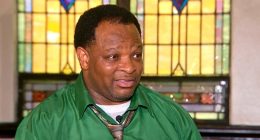
Federal Reserve officials meet Tuesday and Wednesday for the first time since Chairman Jerome Powell said last month that the central bank needed to shift its focus toward preventing higher inflation from becoming entrenched and away from fostering a rapid rebound in hiring from the pandemic.
The pivot raises the prospect that the Fed’s postmeeting statement—a document parsed by markets as a signal of likely future policy—could be overhauled at the conclusion of their meeting Wednesday.
“There are meetings where you make small changes, and there are meetings where you make larger changes. And this feels to me like a meeting where they’re making larger changes,” said William English, a former senior Fed economist who is now professor at the Yale School of Management.
In congressional testimony Nov. 30 and Dec. 1, Mr. Powell suggested that the central bank’s statement would stop characterizing higher inflation as “transitory,” in part because the term was confusing. In its place, the Fed could simply describe various forces contributing to higher inflation, some of which officials don’t expect to last.
“Almost all forecasters do expect that inflation will be coming down meaningfully in the second half of next year,” Mr. Powell said Dec. 1. “But we can’t act as though we’re sure of that. We’re not at all sure of that.”
Officials might also recast part of the statement that since September 2020 has described inflation as having run below 2%. “That language sounds a little out of touch with what’s going on,” Mr. Powell said last month.
Fed officials are poised to quicken the wind down of their bond-buying stimulus program this week because they want to conclude it before raising interest rates. They have signaled they are likely to end it by March instead of June, which would allow them to raise rates sooner. The move to accelerate the process would be the most concrete sign of their shifting inflation outlook.
Other parts of the Fed’s statement or Mr. Powell’s postmeeting press conference could provide clues on how officials see the prospect for rate increases next year.
The Fed introduced specific guidance around interest rates last year as part of formalizing its new policy framework that called for seeking periods of inflation slightly above its 2% target to make up for past shortfalls.
Fed officials committed to holding rates near zero until two tests are met. First, they want to be sure inflation won’t drop below 2%. Many officials think they have achieved that test, but they haven’t said this yet in their policy statement.
Second, they want labor-market conditions to be consistent with maximum employment, a condition they haven’t defined numerically. The rapidly falling unemployment rate—to 4.2% last month from 5.2% in August—suggests to some officials that they have met or are close to achieving that goal.
Fed officials’ economic projections to be released Wednesday could shed additional light on changes to their policy outlook. In September, they were evenly divided between whether they would likely start lifting interest rates in 2022 or in 2023. The new projections could show most now expect multiple rate rises next year.
They also will update their economic projections since unemployment has fallen lower and inflation has climbed higher than they expected in September.
Some critics worry that the Fed’s current pivot reflects potential mistakes committed over the past year. They don’t think the new framework was flawed, but they think it was implemented in a way that unduly tied officials’ hands.
The two-part test committed the Fed to waiting longer to raise rates than it would have in the past, which means interest rates could still be stimulating economic growth for a year or two after it starts to raise them. Misjudging the tightness of the labor market and the potential for price pressures to broaden could compound potential problems.
Jason Furman, who chaired the Council of Economic Advisers during the Obama administration, said it is time for the Fed to say just how it will respond if it is overshooting its inflation goal while undershooting the employment goal.
Mr. Powell has failed to clarify “how the Fed would handle a situation in which the different indicators were sending different signals because they have essentially denied that such a situation was likely to happen,” said Mr. Furman in a presentation last month. “But it is happening in a big way, and additional clarity is needed.”
While there are still 3.9 million fewer people working than in February 2020, some of that gap might reflect retirees or others who are choosing not to work for several reasons, including fear of Covid-19, increased household wealth or lack of child care. It isn’t known how many have left the labor force for good.
“You don’t want monetary policy to try incredibly hard to get a job for someone that doesn’t necessarily even want a job,” Mr. Furman said.
In recent comments, Mr. Powell has hinted at the idea that maximum employment might shift over time and that the central bank could be closer than it thought to reaching that objective.
“They could be raising rates soon in the spring if they judge that they’ve reached their maximum employment threshold and they’re not going to be able to do more [to boost hiring] in the near term,” Mr. English said.
Write to Nick Timiraos at [email protected]
Copyright ©2021 Dow Jones & Company, Inc. All Rights Reserved. 87990cbe856818d5eddac44c7b1cdeb8
This post first appeared on wsj.com









